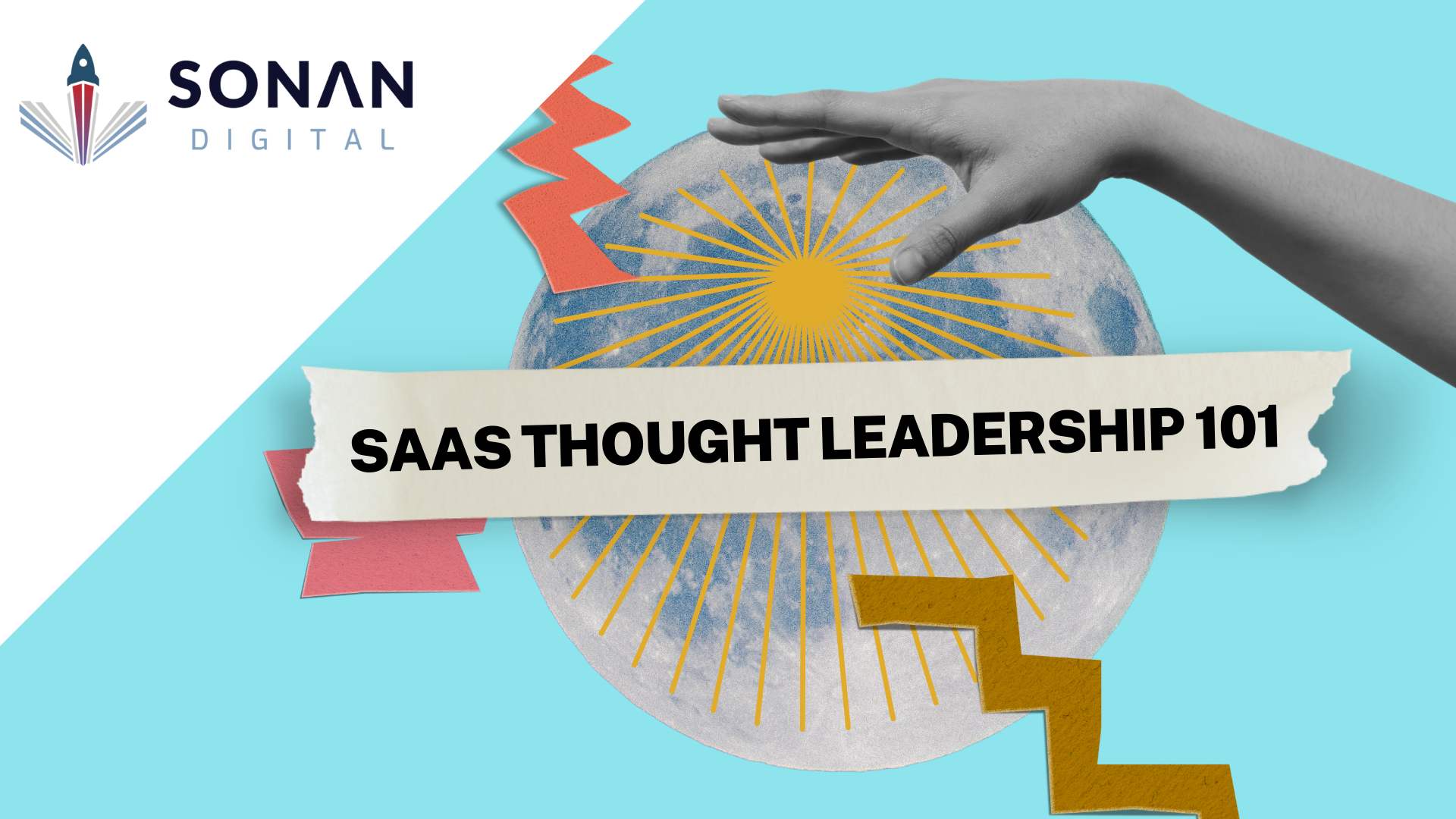Introduction to Inbound Marketing
B2B SaaS inbound marketing can be a complex topic, but it doesn’t have to be. Inbound marketing for B2B brands is simply building awareness and establishing trust with potential customers, through the use of internal content. This can range from blogs, case studies, white papers, video production and so much more. Once you’ve established your brand as a category leader, regular communication builds authority and keeps your company top of mind when it comes time to make a purchase.
Inbound marketing is almost always a preferred method of marketing, considering customers don’t feel as if they’re being sold to. Inbound marketing ultimately solves problems potential customers have right now—you’re directly targeting them at the moment they’re looking to make a sale. Therefore, B2B inbound marketing almost always sees a higher ROI than traditional outbound marketing. According to recent data, inbound marketing costs 62% less per lead than traditional outbound marketing.
Inbound marketing is no longer a “nice to have” item wishlist for SaaS companies, but an essential tactic in a demand generation strategy.
What is Inbound Marketing?
Benefits of Inbound Marketing
There truly are endless benefits to inbound marketing for your SaaS company. Largely, it allows SaaS companies to build authority among their consumers and generate potential leads in a rather cost-effective matter. Unlike paid advertisement, inbound marketing is free to produce and specifically targets the SaaS sales funnel. By creating a targeted content strategy that aligns with your ideal customer, your company becomes a trusted leader, creating excitement, engagement and ultimately—sales.
Difference from Outbound Marketing
Outbound marketing, while still important, is rather different than inbound marketing. Outbound marketing focuses on unsolicited sales. Ultimately, outbound marketing includes activities such as trade shows, seminar series, and cold calling. It is costly and the ROI is much lower than inbound marketing. While some outbound strategies take a lot of effort and may yield no leads, inbound strategies allow you to engage an audience of people that you can more easily qualify as a prospective lead.
Inbound Marketing Best Practices
There are a few different inbound marketing best practices that will help you get started on the right foot. Firstly, you’ll want to map out your buyer’s journey, particularly following the inbound lead path. For an B2B SaaS inbound marketing strategy to work, you’ll want to place your focus on the bottom of the funnel (BOFU), to ensure you’re actually driving conversions.
Another best practice is to build out customer personas, basically a template that outlines your ideal customer. You want to create content that will resonate with your target persona to help make closing a sale easier. What kind of job do they hold? What is their biggest pain point? Education level? It should all be covered in your customer persona template, which can be custom built, or try using the free Semrush buyer persona template.
Finally, one last key best practice is to place importance on either PPC advertising or organic traffic. While both can be effective, be sure to spend time mapping out which makes more sense to your business and aim for certain targets, depending on which content distribution method you choose. PPC or pay-per-click advertising can be highly effective for competitive keywords or industries, while organic traffic driven through SEO can be a great fit for smaller, more niche companies with less competition.
How to Build a B2B SaaS Inbound Marketing Strategy
First, let’s review just a few examples of inbound marketing to consider:
- Blogs
- eBooks
- Case Studies
- Whitepapers
- Webinars & Livestreams
- Videos
- Interactive Media
- Testimonials
- Infographics
- Podcasts
- Newsletters
- E-courses
Content marketing creates funnel demand because every piece of content you distribute guides your potential buyers toward making a purchasing decision. Publishing consistent, relevant content establishes your brand as a trusted source for prospective customers. When they’re ready to take that next step towards a purchase, you’re positioned as their first choice. Here’s our top six techniques to build out a killer B2B SaaS inbound marketing strategy:
Technique 1 – Use SEO to Gain Organic Traffic
The top of funnel is generally a good place to start and that means focusing on SEO. The top of funnel can drive visitors from across the web in search of relevant content that matches their search intent. With the help of a well-planned SEO strategy, you can easily attract your target market audience. By targeting keywords that fit a search query, and then feeding searchers with purpose-built, valuable content— your business will connect with potential customers immediately. SEO is a long-term game, you have to invest time and effort for months, all in order to rank higher and gain organic traffic.
Here’s a quick overview of what you need to build your site authority and gain organic traffic:
- Research the right search phrases to rank for (using tools like Semrush or Ahrefs)
- Analyze your competitors’ keywords for gaps
- Produce quality content using targeted search phrases and words
- Build internal links with your content to create effective topic clusters
- Revist and update any old content to better fit your strategy
- Maintain a consistent level of output each month
Technique 2 – Build a Loyal Blog Following
While this is easier said than done, building a loyal blog following is the number one inbound marketing strategy for growing organic traffic. If specifically targeting tech or SaaS, the content can often be dense and intimidating for the average consumer. By producing easy to understand blog posts that remove the tech jargon, you allow potential leads to understand your product from the get-go.
If you are a SaaS business, you NEED a blog. It’s not a nice-to-have, it’s a must have. Why? Because literally everyone else is doing it and you won’t seem trustworthy or ahead of your competitors if you don’t have one. Here are just a few fun stats to drive home why it’s so important to focus on your blog:
- 77% of internet users read blogs
- Blogs are in the top 5 most trustworthy online sources
- 92% of companies who blog multiple times per day have acquired a customer from their blog
Information is the most important resource for SaaS companies, hands down. Teach your customers about what your software does, placing emphasis on how it helps make their lives better. The content has to be accurate, well-researched and full of your brand values. People in this day and age like to support a purpose-driven company, so take that into consideration. One example of a successful blog serving a specific niche is The Namesake Box blog.
Don’t just stop at blog content creation and wait for your audience to appear, you have to share, share and share across your social channels. Repurpose your content over and over, because chances are a very small percentage of your audience ever saw the original piece of work on another platform. To build a loyal audience, you have to promote the heck out of your brand anywhere and everywhere you think your ideal target audience might be.
Technique 3 – Offer Gated Whitepapers, eBooks, & Courses In Exchange For Emails
This technique targets the middle of the funnel of your inbound strategy. At this point, your audience likely has a pretty good idea as to your brand and value proposition. And while they likely believe your brand is authoritative and trustworthy, they’re also likely one of 50% of leads that aren’t ready to make a purchase, or provide their email…yet. Largely, this is the step that most brands get wrong. Content cannot be quick filler pieces at this middle funnel stage. You want to create content that is in-depth, accurate and longer form.
Here are four gated pieces of content ideal for email signups:
- Whitepapers: One of the longest and more technical documents you can offer—for SaaS products whitepapers are a fantastic lead magnet to close the deal. A whitepaper provides an in-depth analysis about your software and what it achieves for customers. A potential lead who is looking for a whitepaper is likely almost ready to make a purchase and is looking at the product specs. It’s okay to get a bit geeky with this type of content.
- Webinars: Video content is often under-utilized in the sales process, but can be a huge lead magnet for emails. Consider hosting a monthly webinar to provide more in-depth background on your SaaS and address specific pain points.
- eBooks: This tool serves as a longer research paper providing in-depth thought leadership and guidance on a specific topic that solves customer pain points. It doesn’t have to be all text though, consider including infographics and graphs to break down complex data.
- Courses: Ideal for those looking to build a skill that relates to your SaaS product, courses are a great way to provide specialized education and ‘insider’ knowledge from a leading expert (you!).
Technique 4 – Create Customer-Focused Landing Pages
One often under-utilized content hack is creating customer-segmented content. Not everyone who lands on your page is looking for the exact same thing, especially if your software serves multiple niche markets. Customers love to see EXACTLY how your product is going to solve their specific problem—not just another generic sales pitch where they have to do the work to uncover how you can help.
Creating a customer-centric website helps to immediately convert leads by:
- Showing visitors that you understand their needs
- Pointing them in the direction of relevant content
- Demonstrating that your software solves their specific challenge
- Streamlining their journey to see helpful features and prices
If you’re selling property management software, considering creating specific targeted landing pages for each buyer persona: enterprise property management companies, small-to-medium property management companies, hotel chains and smaller, Airbnb hosts. By putting the right content in front of the right people, you not only help remove hurdles for the sales team, but you’re far more likely to build trust from that initial click.
Technique 5 – Provide Compelling Case Studies to Seal the Deal
To seal the deal, build your case study content library. Wondering how to overcome the last hurdle to convince your prospective lead your SaaS is the right fit? Provide them with an exact use case of how you helped solve the problem for a current customer. Nothing builds trust like proving you’ve already done something before— and it worked.
Spend time interviewing your current customers and uncover how your product solved their pain points. Lastly, you’ll want to be sure to touch on any ROI or clear stats that highlights just HOW much your product helped your customer reach their goals. People love to see themselves in others, so showcase all types of clients and success.
Technique 6 – Use the Growing Power of Video to Reach Your Target Audience
It’s estimated that video traffic will account for an estimated 82% of customer internet traffic as of 2022. Meaning there’s no better time than right now to make video a part of your B2B inbound marketing strategy. The power of video grows every day, so don’t sleep on this powerful inbound marketing tool. Most companies get hung-up on the production quality, but it truthfully doesn’t have to be anything fancy. Even a simple graphics video in Canva can help illustrate a point and drive more leads to your website.
Video is also a fantastic repurposing tool for content. Instead of spinning the wheel, you can turn any blog post, infographic, whitepaper, etc, into a short, bite-sized video optimized for social media. Drive your expertise home by providing your audience with actionable videos that they can consume in under three minutes.
Just a few video platforms to consider for content re-purposing:
- Instagram Reels & video posts
- TikTok
- Youtube Shorts
- LinkedIn Video
- Youtube
Overview of B2B SaaS Inbound Marketing
By taking the time to map out a B2B SaaS inbound marketing strategy, you’ll be on the right path to seeing a serious ROI on your content marketing and SEO marketing efforts. Ultimately, the number one thing each and every prospect is looking for is a great product and quality content that addresses their pain points—making it a clear “YES” when it comes time to buy. The world of SaaS can be competitive, but if you create the right content and establish yourself as a category leader—you can officially play with the big dogs.
If you need help putting together your own inbound SaaS strategy, give us a shout.
-1024x320.png)




